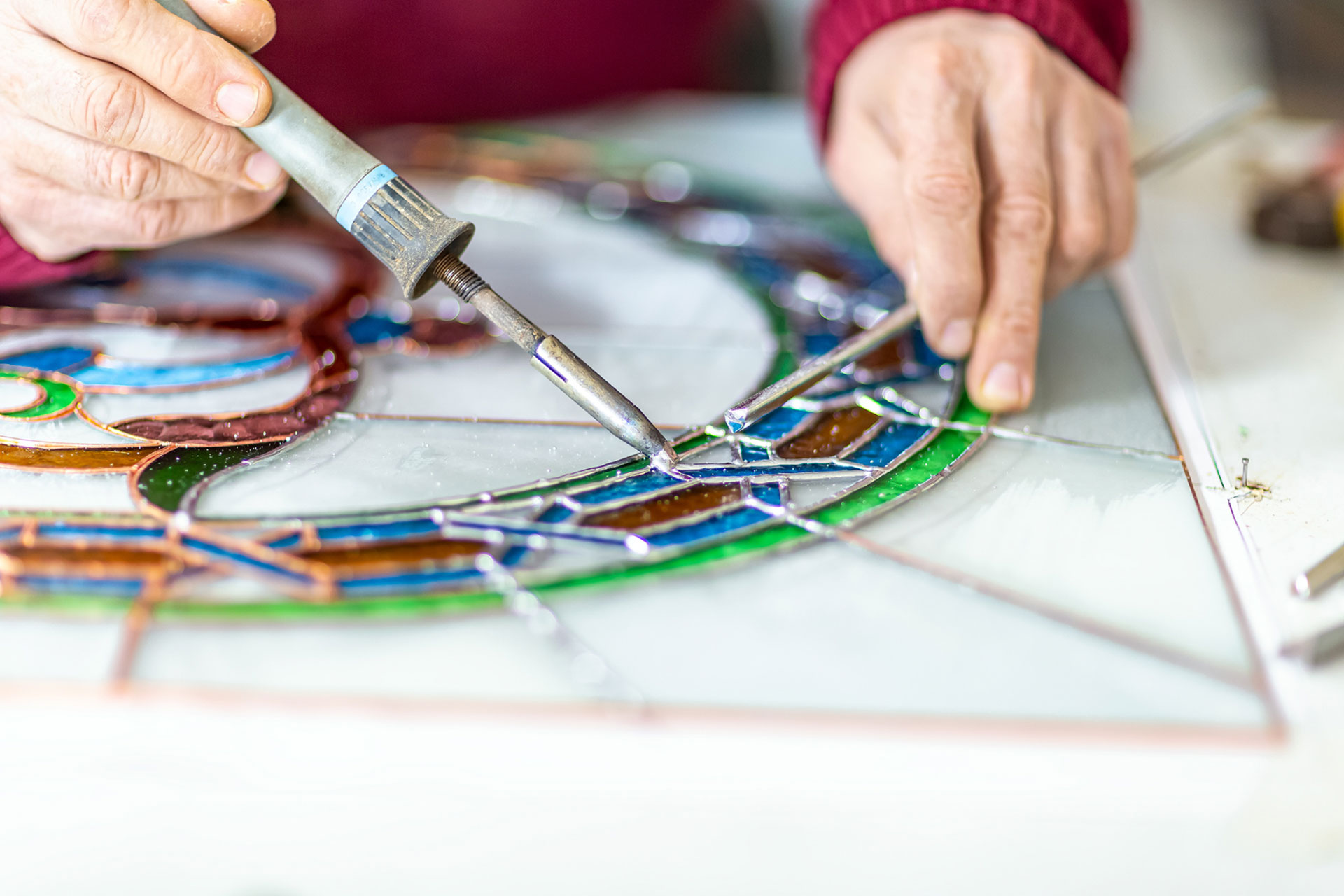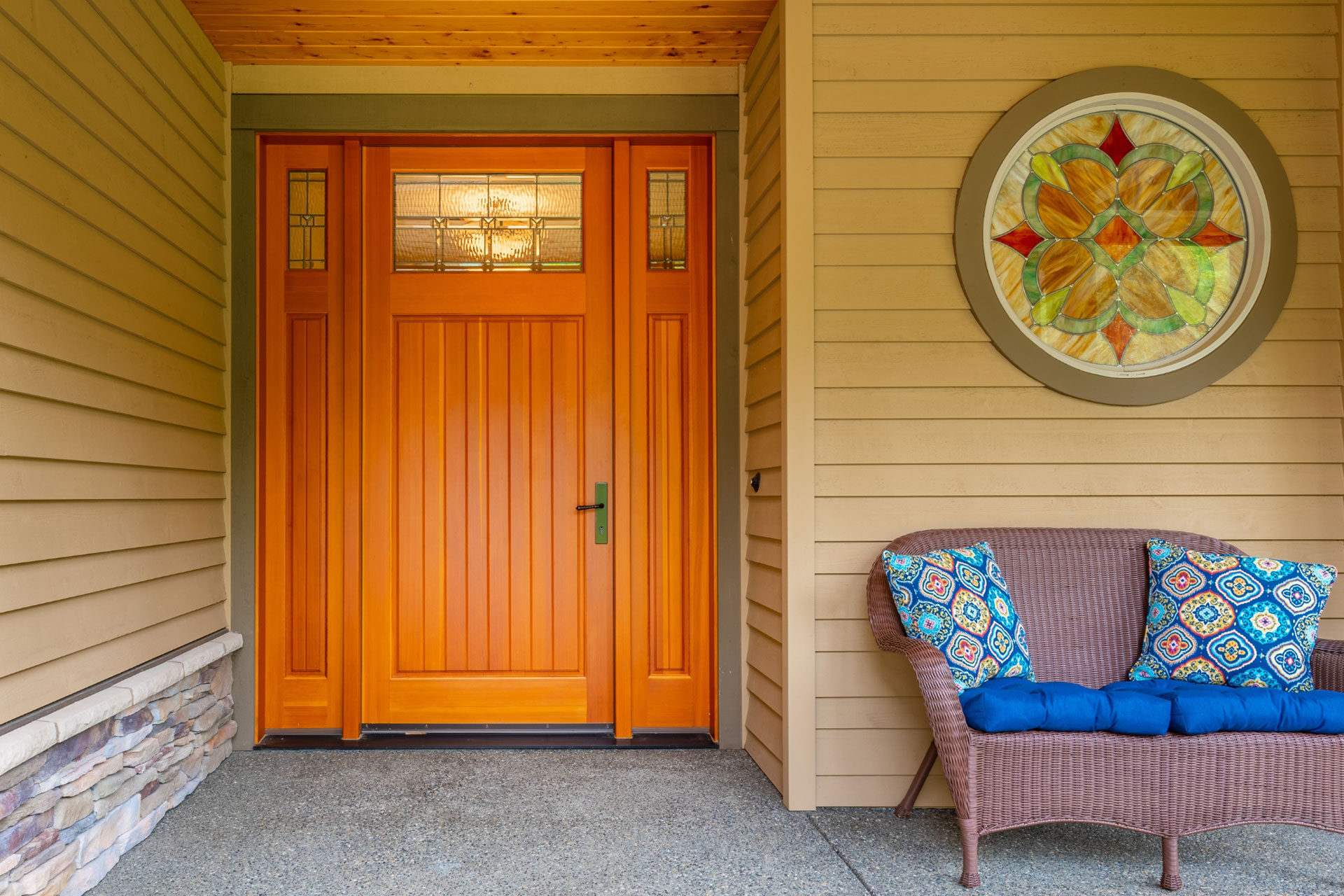Stained glass has beautified buildings for centuries, and how it’s made and styled has greatly changed since its first use in decorative objects and cathedrals. Now seen in homes as windows or on decorative pieces, stained glass remains a popular and fascinating art form. Let's dive into the history of stained glass and see how this age-old tradition lives on today in glazed windows in modern houses.
Origins of Stained Glass
Stained glass history began with the use of coloured flashed glass by ancient peoples like the Egyptians and Romans, who used it for decorative objects, such as jewelry and small bowls. These early uses of coloured glass laid the groundwork for the development of the stained glass technique we know today.
The Golden Age of Stained Glass
Medieval stained glass flourished in Europe during the Middle Ages, roughly between the seventh and 15th centuries. This period saw the rise of Christianity and Gothic architecture which featured tall, pointed arches and large windows, perfect for showcasing magnificent Gothic stained glass craft.
These fixed windows weren't just beautiful; they served a purpose. In a time when many people couldn't read, the vibrant colours and detailed scenes depicted in stained glass windows illustrated stories from the Bible, teaching people about their faith.

Image Source: Canva
A Shift in Style
The Renaissance, a period of renewed interest in classical art and learning (14th to 17th centuries), brought a change in painted glass style. Glass painters drew inspiration from ancient Greece and Rome, incorporating more realistic human figures and scenes into their designs. While still found in church windows, renaissance stained glass production also began to appear in palaces and wealthy homes
Think of the famous Renaissance paintings with their realistic figures and focus on perspective. Stained glass art followed a similar trend, with stained glass artists using techniques like shading to create depth in their designs. Biblical glass painting themes remained popular, but mythological figures and portraits of important people also became prominent subjects.
Periods of Decline and Revival
Following the Renaissance, the popularity of colored glass dipped. The rise of Protestantism, a branch of Christianity that emphasized simplicity, led to fewer grand churches being built—a prime venue for stained glass artistry.
However, the art form didn't disappear completely. The 19th century saw a revival of interest in stained glass, fueled by the Gothic Revival movement in architecture. Victorian-era stained glass often featured rich colours, floral designs, and religious themes.
Modern Stained Glass
Today, stained glass continues to evolve. While still used in religious settings, it's embraced by modern designers and architects. From public buildings to modern homes, stained glass adds a touch of history and artistic expression to any space.

Image Source: Canva
How Stained Glass is Made
The beauty of stained glass lies not only in the final product but also in the process behind its creation. Here's a peek into the traditional methods used in the history of stained glass.
1. Choosing the Colours: It all starts with picking the glass colour. Metal oxides like cobalt (blue), copper (reds and greens), and manganese (purple) are added to molten glass during its manufacturing process, resulting in a vibrant palette. Skilled stained glass artists carefully choose the glass pieces that will best translate their desired design.
2. Cutting with Precision: The chosen glass sheets are meticulously cut into intricate shapes. Full-scale drawings of the final artwork called cartoons serve as guides for this stage. Special tools like glass cutters and grozing irons are used to ensure precise cuts and smooth edges.
3. Joining the Pieces (The Lead Came Technique): Once the glass pieces are cut, they’re assembled like a puzzle. Thin strips of lead, called lead came, are used to join the individual pieces. The lead is shaped to fit the contours of each glass piece, ensuring a snug fit.
4. Soldering for Strength: After the lead came is shaped and fitted, the entire structure is soldered for stability. This process uses a hot metal tool to melt solder, which bonds the lead came to itself and creates a strong, secure framework for the stained glass artwork.
While the lead came technique remains a cornerstone of stained glass creation, contemporary artists are also exploring new methods such as:
- Fusing: Melting different coloured glass pieces together to create unique textures and patterns within the glass itself.
- Lamination: Layering sheets of glass on top of each other, combining different textures and colours, adding depth and complexity to the artwork.
Caring for Stained Glass
With the vast history of stained glass, you might think caring for it is tedious. However, keeping stained glass vibrant for years to come is surprisingly simple. Here’s how:
- Regularly dust it with a soft, dry cloth.
- For deeper cleaning, use a gentle soap solution and lukewarm water.
- Harsh chemicals and abrasive cleaners are a no-no, as they can harm the glass and lead came.
- To prevent fading, filter direct sunlight with window treatments like blinds or curtains, especially during the hottest parts of the day.

Image Source: Canva
Add Beauty to Your Home With Clera Windows + Doors
Stained glass adds a special touch to any space, from big churches to your home. Compared to plain clear glass, the colour of stained glass windows can brighten up a room and make it feel more private.
Here at Clera Windows + Doors, we’re passionate about beautifying your home how you want it—even with stained glass windows! Take what you’ve learned from the rich history of stained glass and let colourful designs decorate your home.
Let Clera Windows + Doors help you create a stained glass masterpiece that reflects your personality and style while adding a touch of history and artistry to your home. Contact Clera today!








